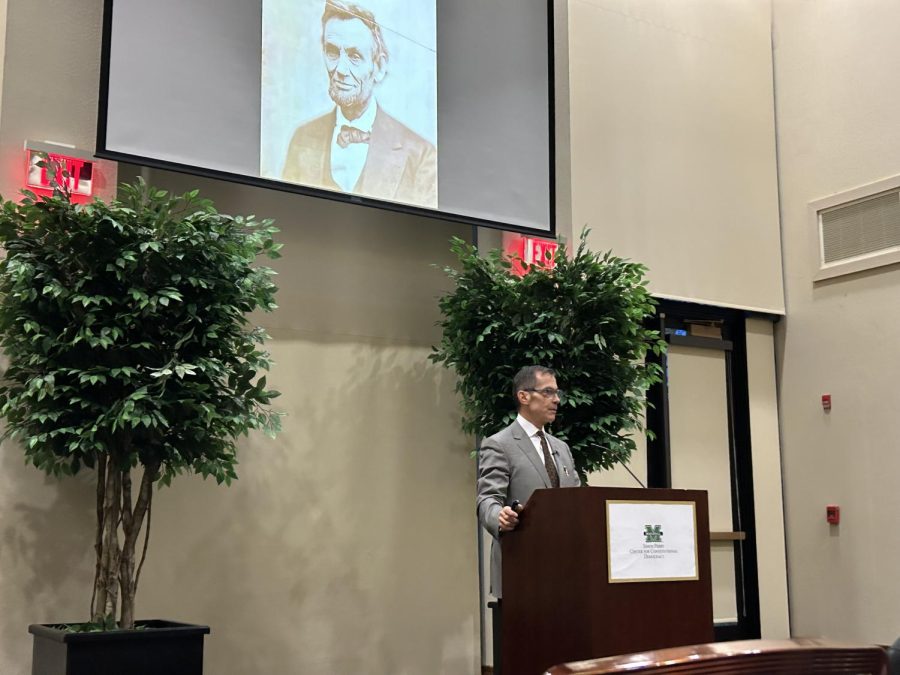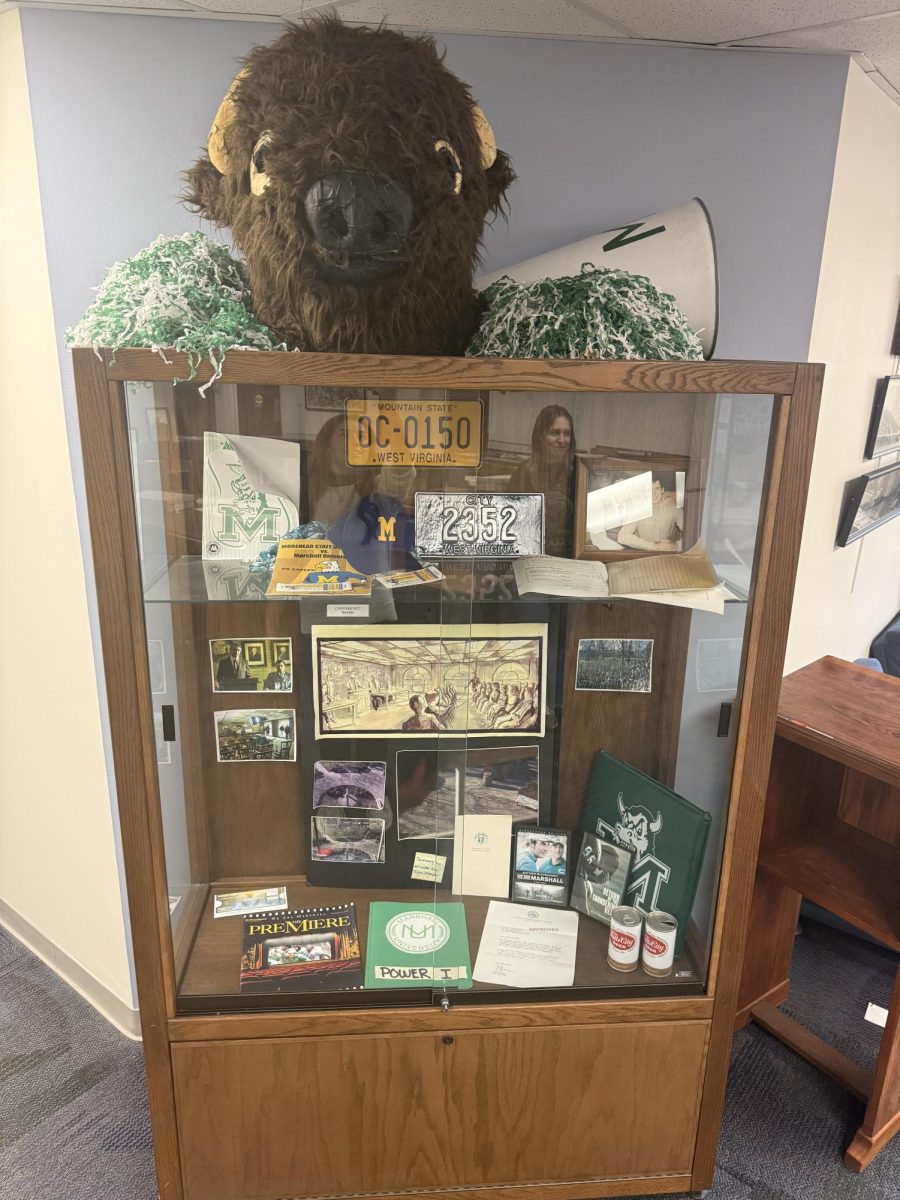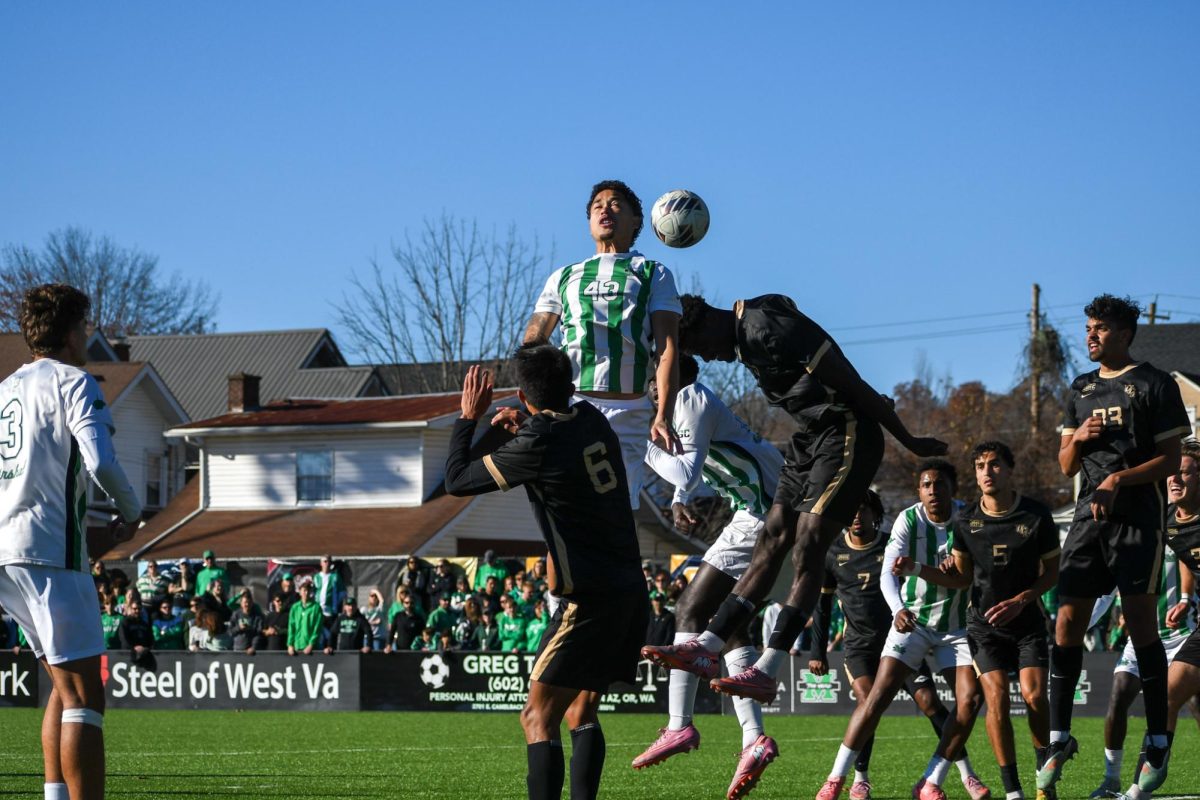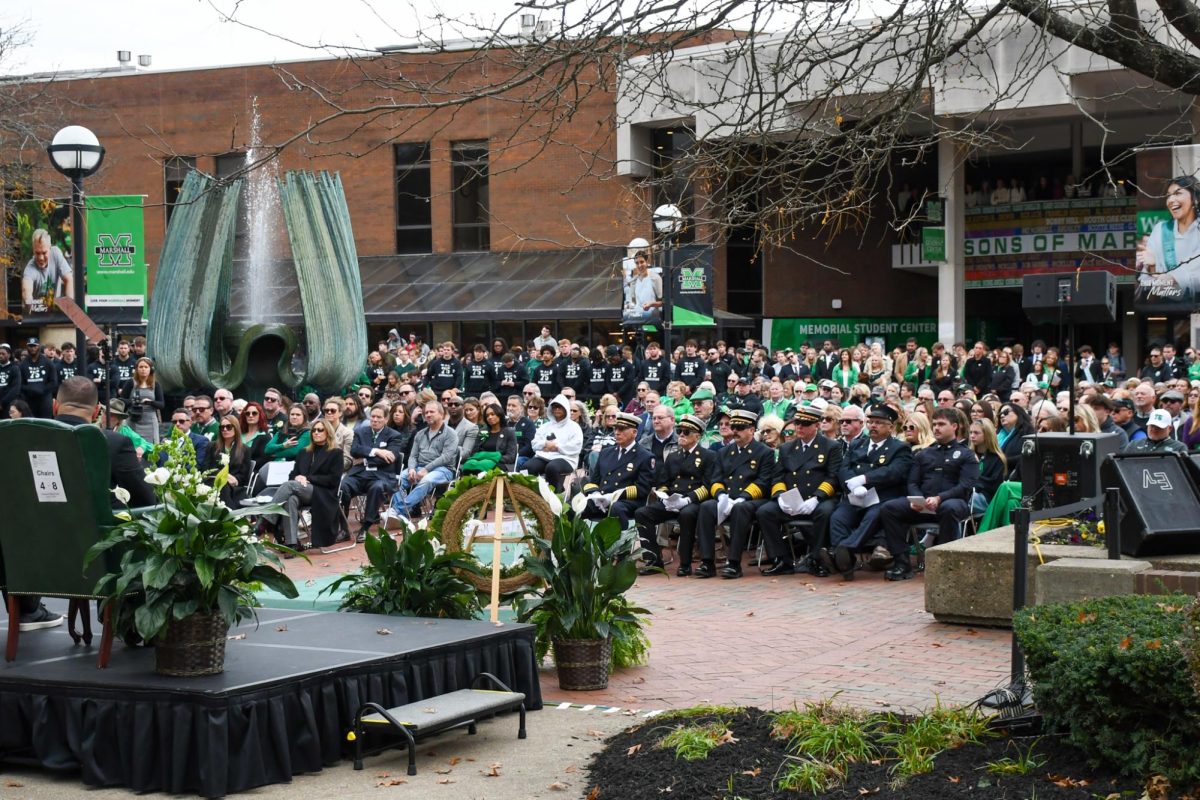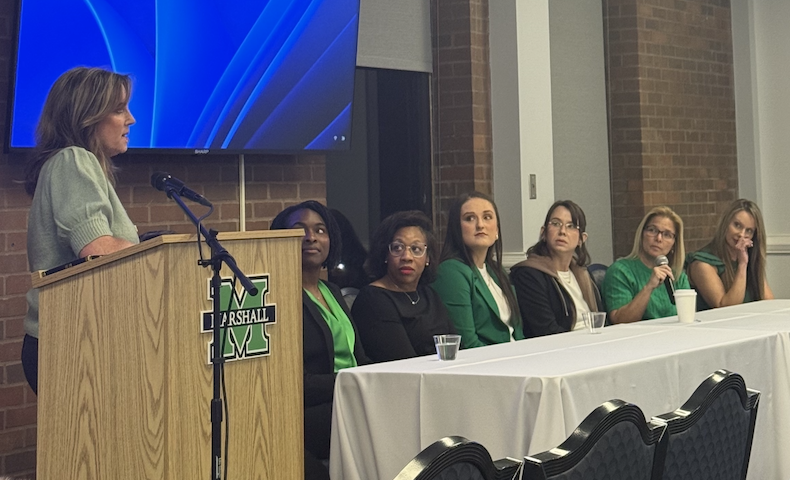Final Amicus Curiae Highlights Frederick Douglass and Abraham Lincoln
April 10, 2023
The shared principles between two Civil War-era men are grand, according to an author and Harvard professor who spoke on the lives of Frederick Douglass and Abraham Lincoln.
Marshall’s Amicus Curiae Lecture Series, which is sponsored by the Simon Perry Center for Constitutional Democracy and the West Virginia Humanities Council, concluded on Thursday, April 6, with “GIANTS: The Parallel Lives of Frederick Douglass and Abraham Lincoln.”
“Douglass and Lincoln are among, if not, the preeminent self-made men in the United States,” Dr. John Stauffer said of the parallels between the two historical figures.
Stauffer is an author and professor of English and African American studies at Harvard University. Stauffer is the author and/or editor of 20 books, and his work has been published in various publications such as The Wall Street Journal and The New York Times. He also acts as a film consultant for movies, including “The Free State of Jones.”
In his lecture, Stauffer explored the similarities and differences between two American historical figures: Frederick Douglass and Abraham Lincoln. He argued that the parallels between these two Civil War-era political leaders are in fact what made their friendship so powerful.
“Friendship has always meant that two people are not only connected in terms of their likeness (liking each other), but it reflects this understanding of equality between two friends, as well as this emotional, intellectual bond,” he said.
Stauffer went on to point out specific parallels between Douglass and Lincoln. In addition to both men’s involvement in politics, they both had little education, enjoyed the same few books and grew up in what Stauffer called “vicious communities.”
Stauffer informed the audience that both men had to overcome bullies in their childhood. Douglass—who grew up as a slave—fought a slave breaker and Lincoln fought a gang of boys.
“They both defined a fight as the turning point in their lives,” he said.
Douglass and Lincoln did, however, differ on their political stances. Douglass was an abolitionist, meaning he was working to abolish slavery. Lincoln was anti-slavery, meaning he did not agree with slavery but was not active in abolishing it.
Once Lincoln began his journey of American presidency in 1860, the differences between the two started to show more prominent. Douglass referred to Lincoln as an “excellent slave hound” after his first inaugural speech in 1861.
The two men had their first meeting in 1862, second in 1864 and third in 1865 at Lincoln’s second inauguration. It was at their third meeting when Lincoln finally called Douglass his friend.
Stauffer explained the lessons that can be learned from Douglass and Lincoln, perhaps the grandest being their prioritization of their relationship over politics.
“Their political differences were separate from their interpersonal relationship,” he said.
They also taught how to improve oneself and one’s communities, according to Stauffer. The pair did not underestimate the power of working together.
“Both recognize[d] that in order to destroy slavery, you had to win the war. And in order to win the war, you had to destroy slavery. And the two worked together in achieving those goals,” he said.
Stauffer also included photographs in his presentation. One of the photographs featured Douglass posing with Lincoln’s cane, which he received as a gift from Lincoln’s wife, Mary Todd Lincoln, after his assasination in 1865.
Concluding the lecture, Stauffer encouraged those in attendance to look up to the two men.
“I think ultimately that Douglass and Lincoln’s friendship can serve us today as inspiration, in the sense that they can help us bind up the nation’s wounds, and we have a lot of them right now,” he said. “And complete the unfinished work, fulfilling the ideals of freedom and equality of opportunity for all people.”


